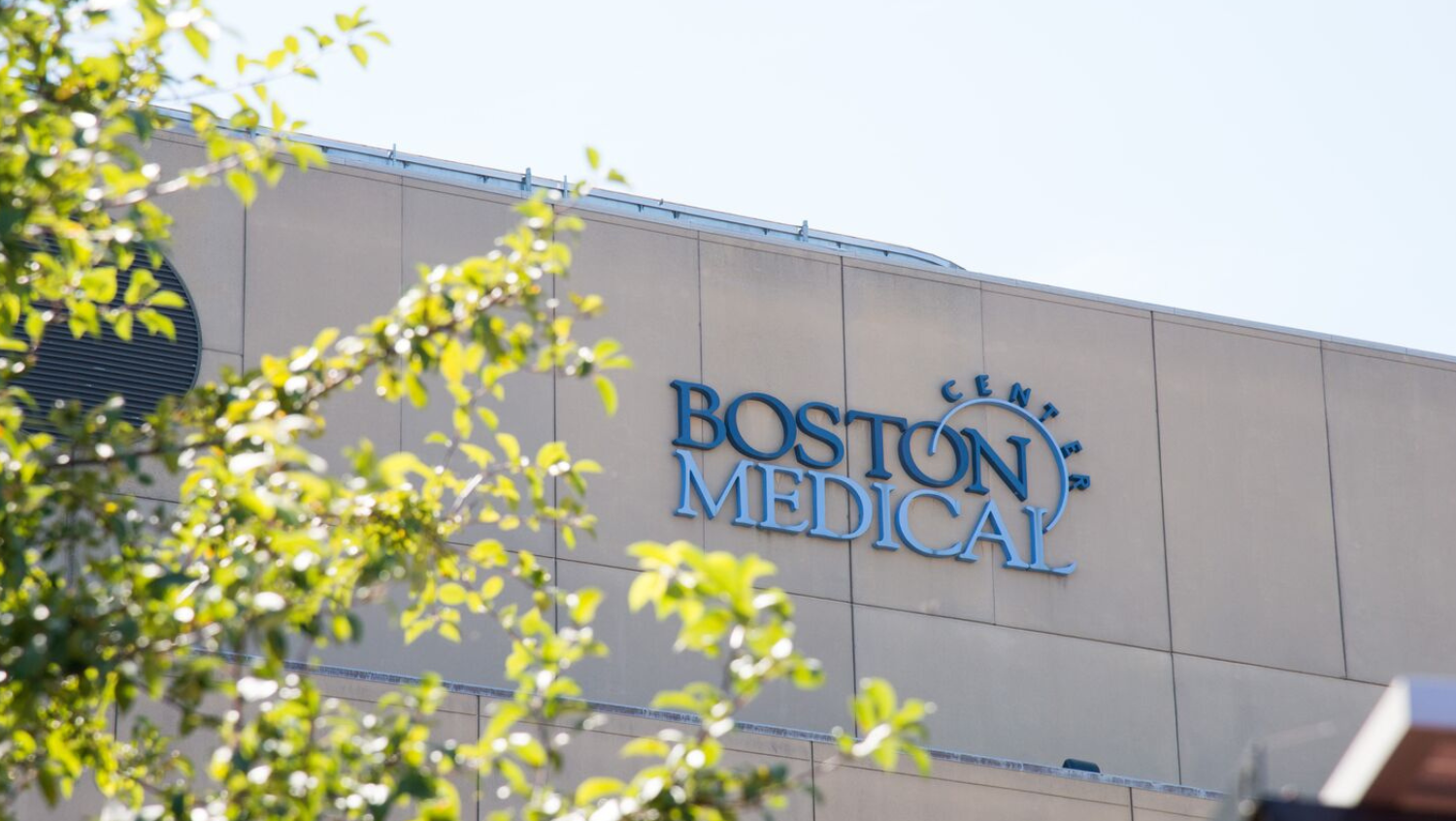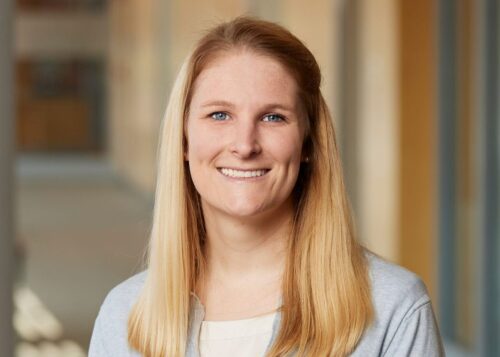
Boston Medical Center
In honor of HealthCity's five-year anniversary, we're sharing our favorite reads, including intimate portraits from the front lines to innovative programs and more.
Healthcare systems have been through a lot in five years. A global pandemic. A reckoning on racial health justice. An ongoing overdose epidemic. It’s been absolutely vital not only for new, innovative approaches and programming from health systems, but also for clear, trusted communication about those innovations. Since launching in spring 2019, HealthCity has been publishing articles discussing these issues from some of the leading experts and pioneers, aligned with Boston Medical Center’s commitment to delivering expert care that’s equitable.
In honor of its five-year anniversary, HealthCity’s editorial team, with input from readers and other BMC staff, wanted to share their picks for favorite stories, in no particular order.
1. “Curbside Care for Moms and Babies Changes the Vision of Postnatal Care“
Using models deployed during the pandemic to increase access to care, BMC’s Curbside Care offered birthing parents and their new babies postnatal care via an ambulance that would come to their home. The parent then is able to visit with a nurse practitioner while the baby has an appointment with a certified midwife. This story has pictures from a ride-along with one couple’s appointment with their new baby. The story became so popular that the Boston Celtics’ Shamrock Foundation sponsored the next evolution of Curbside Care.
2. “Special Pathogens Unit Nurses Are Already Preparing for the Next Novel Virus“
Boston Medical Center’s Special Pathogens Unit (SPU) is a state-of-the-art treatment space built to provide care for people who have been infected with the world’s most lethal emerging pathogens. The training helped prepare nurses for the COVID-19 pandemic, and it showed just how crucial that preparedness is as they anticipate any patient seeking care at the hospital with a new or existing virus. The story gives an inside look to the nurses working in the SPU, running drills, and donning their spacesuit-like PPE.
3. “Why BMC’s Center for Transgender Medicine and Surgery Just Changed Its Name“
An essential piece of BMC’s health equity mission is to create a welcoming, inclusive environment, and this story on how one clinic changed its name is just one example of how hospitals and health systems can do that. “Taking the word ‘transgender’ out of the name was important to us as it didn’t accurately reflect the diversity of the people we see. We are not just caring for those that identify within the binary — we’re providing care for all people,” explains Beth Cohen, MD, medical director of the center, in the story.
4. “No One Screams on a Breathing Machine“
This haunting and evocative story is direct from the front lines of the COVID-19 pandemic — written by a medical resident working in the ICU overnight in early April 2020. His portrait of the unusual quiet at 4 a.m. during his shift tells a story about the effects of the virus in a way that’s hard to achieve with academic or strictly factual texts. “No one screams on a breathing machine, but you hear it echo somewhere inside anyway,” he writes.
5. “It’s Our Responsibility to Treat the Human Suffering at the Heart of the Opioid Overdose Crisis“
Miriam Komaromy, MD, the medical director of the Grayken Center of Addiction, has dedicated her career to helping people with substance use disorder receive compassionate, cutting-edge care, no matter where they are on their path. With data showing that overdose deaths have reached staggering heights, she pens an op-ed on how healthcare systems can respond to the crisis with a person-centered, racial-justice approach.
6. “Is Healthy Sleep for Medical Residents Possible?: AUDIO”
In its five-year history, HealthCity has experimented with various types of storytelling. Perhaps the most exciting was this two-part audio series about sleep, specifically for medical residents everywhere. BMC experts spoke about why sleep is so essential for residents and their patients, why structures and tradition make residents feel like they shouldn’t have time to sleep, and tips to help. What really stands out, though, are the residents’ own audio sleep diaries that they keep as they work their shifts, live their lives, and, yes, try to get some sleep.
7. “Fathers Who Lost Partners to Pregnancy-Related Deaths Are Dedicating Their Lives to Birth Justice“
Maternal health equity is a core mission at Boston Medical Center; the statistics on the disparities in outcomes by race both for birthing parents and babies are alarming. At a Vital Village Networks event in 2023, Omari Maynard and Bruce McIntyre III drew attention to not just these statistics, but to the names and faces behind the numbers. Both of their spouses, Shamony Gibson and Amber Rose Isaac, respectively, died due to pregnancy-related complications. Now, they have dedicated their lives to speaking their names, helping other fathers, and advocating for birth justice.
8. “What’s Wrong With Being Called a Nurse?”
While healthcare is working to dismantle negative stereotypes and stigma, sometimes it sparks healthy debate. This op-ed about implicit bias against nurses by Nancy Gaden, DNP, RN, FAAN, Chief Nursing Officer of BMC, was written in response to another HealthCity op-ed about implicit bias. “Do I Sound Like a Girl?” discusses how power and leadership is often associated with masculine traits, and it mention how women physicians are often mistaken for nurses by male physicians. According to Gaden, parts of that argument “caused a stir” among her nursing colleagues, and she was keen to talk about it.
9. “The Creator of a Viral Black Fetus Medical Illustration Blends Art and Activism“
To combat systemic racism in healthcare, this story says it’s imperative to look at the learning materials we use when teaching new doctors. One Nigerian-born artist and medical student, Chidiebere Ibe, noticed that most of the medical illustrations in his textbook used people or models with white skin. Not only is this an inclusivity issue, making Black or Brown people the “other,” but as one BMC expert says, it can also be clinically misleading—many diagnoses look different on white skin than Black skin, for example. See Ibe’s new medical illustration examples inspired by his own heritage.
10. “One Addiction Counselor’s Life Mission to Assist Others in Recovery“
Rosa Auterio-Williams, CADC, LADC, a licensed drug and alcohol counselor with BMC’s Grayken Center for Addiction, writes about how her own experience with substance use disorder and recovery has helped her become a powerful advocate for her patients. Auterio-Williams opens up about her own experiences with opioids living in New York City and her life now, 23 years in remission.
“Those personal experiences allow me to know intimately the behavioral aspects present in addiction and fully recognize that the person in front of me is a human being deserving of care,” she writes. “I can empathize and provide knowledge from this unique perspective and can identify with the most stigmatizing parts of addiction and recovery, including relapse.”


